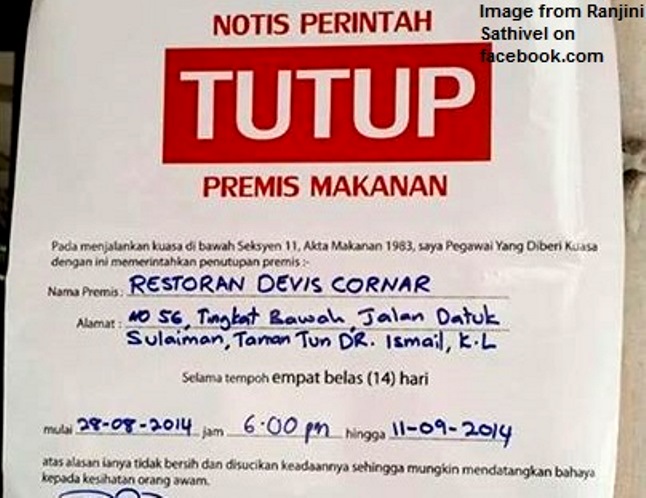9 food scares in M’sia that can cost MORE than a painful bekside

- 608Shares
- Facebook582
- Twitter1
- Email7
- WhatsApp15
So yesterday, we found out that we’ve got FAKE MUTTON meat now. Well, that’s just great.
The Petaling Jaya City Council found some shops passing off some other meat as mutton. It’s possibly because of the high price of local mutton (due to limited supply) that they wanna fake it. OMG we shudder to think what’s in it, but lab tests are not back yet. What has been confirmed is that the DNA…does not belong to goats!!
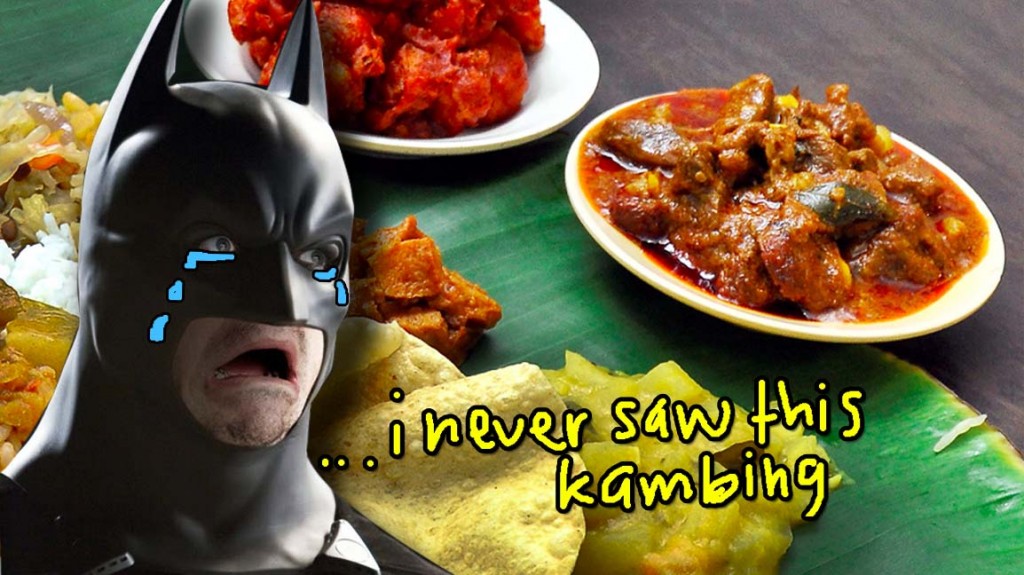
“Currently, we are awaiting the second lab results before we take legal action against the proprietors.” – Dr. Chitra Vadivellu, Health & Environment Director, The Malaysian Insider
Woi scary lah. Like we said, we don’t know what these fake mutton meat are made of, and apart from having health side effects, who knows if it has religious implications! Not to mention there’s a typhoid scare in KL right now… makan minum all also gotta be careful a bit.
Apart from this, there have been so many food scares – fake stuff la, or just scary, eat-and-sayonara kinda stuff. There are quite a lot of them, but we listed 9 (sans fake mutton since it’s WIP) and see how big of a threat they are to our health.
1. Plastic bottle pisang goreng

Truth or hoax? There were rumours that hawkers fried plastic bottles or straws in oil for pisang goreng because it stays crispy for HOURS. It’s been discussed on forums and was even reported in New Straits Times, where factory worker Rauf Hamdan claimed he literally saw a seller throwing in a plastic bottle. The trend apparently started in Thailand where people fried plastic with ikan bilis and onions to keep ’em crispy.
The team was split on this. Half of us believe it, half of us think it’s way TOO crazy. But the thing you should be worried about is the recycling of oil… until it becomes carcinogenic.
Actual threat: 1/5 or 5/5
If it’s FALSE, then the perceived threat would be 1/5. If it’s TRUE, then the threat would be freaking 5/5 lah, coz eating melted plastic ZOMG! But in our research, we came across several sources telling us that ingesting plastic one-off may not be so bad. In fact, the transferring plastic onto our food is an unavoidable process, coz all packaging materials contain substances that can migrate into the food.
2. Fake Milo

Hah, you guys knew this was coming, so we thought we’d get this out of the way early. You probably know a lot of the facts since this case is pretty fresh… the authorities busted the counterfeiting operations in Mantin, Negeri Sembilan, seizing RM250,000 worth of cetak rompak Milo, 1,000 empty boxes, 50,000 empty plastic packs, machinery AND 6 immigrants from Myanmar and Indonesia. Here’s a video of the bust.
After the news broke, Nestle quickly started a Facebook campaign teaching consumers how to spot the fake:

We don’t know what ingredients they used to make cetak Milo or whether it was actually harmful. Nestle said they were conducting tests on the product sample, then the news just died down. As far as reports go, nobody complained of diahoearrea or glow-in-the-dark skin drinking Milo, but if any of you had unpleasant experience with the fake powder, feel free to share it in the comments.
Actual threat: 1/5
Since there were no hospital reports of death-by-fake-Milo, maybe they used real food stuff, and maybe the only threat is to the Milo brand…and probably some people’s taste buds, as the fake one reportedly tastes burnt. Ew.
3. Rubbery eggs
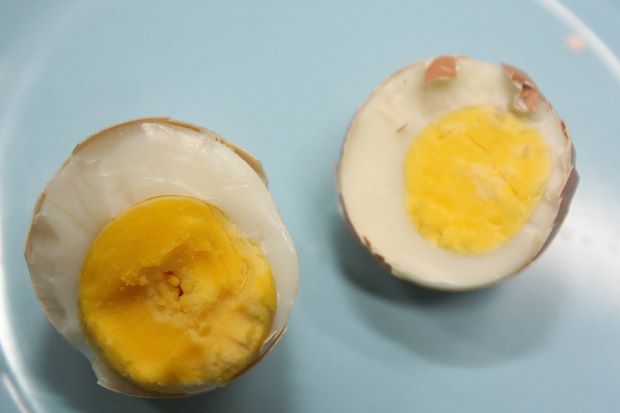
This one is also not too old. It started with a video being shared online, after a woman from the Klang Valley bought some eggs, boiled it, and found the texture of the yolk rubbery. In the video, where she poked and pressed the yolks, they kinda do look spongy to us.
It’s said that fake eggs reportedly from China, have shells made of calcium carbonate, paraffin wax and gypsum powder, and yolks and whites made of alginate, alum, gelatin and colouring. But did you guys know the fake egg scare is not new in Malaysia? Three years ago, a housewife in Penang complained to the Consumers Association of Penang. Here’s a video from The Star when they investigated the case:
A Japanese journalist did some incredible work investigating this fake egg market in China and why they do it – which is basically to sell eggs at a cheaper price. Watch the video here. But as a consumer, you can look out for signs: fake eggs sound hollow when tapped and they don’t have an odour like the real ones. Also, the white and yolk mix together quickly after breaking it open. Have any of you guys come across fishy eggs like that?
Actual threat: 3/5
According to research, the ingredients used to create bogus eggs can be harmful to your brain and nerve cells. It also affects a person’s metabolism. Simply speaking, if you check your eggs before consuming them, this threat drops to zero.
4. Fake rice
There a joke that goes like this:
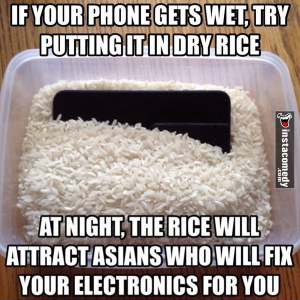
But there’s nothing funny about this scare. On 18 May, news reported that FAKE rice from China may have made it to our grocery shops. This plastic ‘rice’ is made from potatoes and sweet potatoes, with synthetic resin to mould it into shape. So how can you tell if the bag you bought is real rice or fake? The fake one is said to stay hard even after it’s been cooked.
“We will conduct our investigations, but at the same time I would like to plead with consumers to come forward and report to the ministry if they come across such rice. All reports made will be treated confidentially.” – Datuk Seri Hasan Malek, Minister of Domestic Trade Cooperative and Consumerism, The Star
Actual threat: 4/5
This fake rice thing could be serious, guys. Health experts and dieticians warned that eating it could be lethal or seriously damage the digestive system.
5. Melamine White Rabbit Creamy Candy
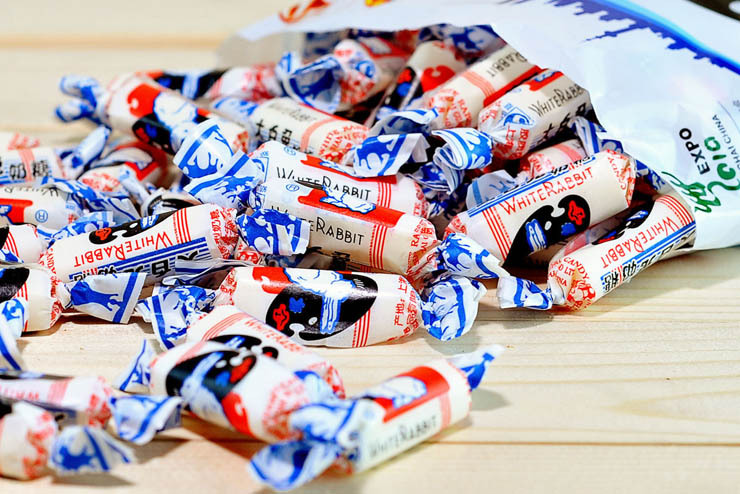
Yep, most of us would remember this candy from our childhood with its edible wrapper. The brand went through not just 1, but 2 scandals. The first was in July 2007, when it was found to be contaminated with formaldehyde – the stuff you use to preserve dead bodies. It was discovered in the Philippines and later in Indonesia. Singapore arranged tests of their own and found it safe. The company cried foul and claimed that the contaminated candies may have been counterfeits. Because their brand is so famous, lot’s of people actually tiru.
One year later, another scandal came up in September 2008. The candy was found to contain melamine – the stuff people use to make plates and other utensils. So again, the candy was recalled in several countries, including Malaysia.
But research from Singapore showed that the danger was not as bad as people thought. The highest levels of melamine detected were 160 parts per million (ppm), according to the Agri-Food and Veterinary Authority. A 60kg adult would have to eat more than 47 pieces of candy every day over a lifetime to exceed the tolerable threshold. For a 30kg child, the value would be roughly half those.
So then why did Malaysia and other countries take it off the shelves? Because the value simply exceeded the official allowed dosage anyway (the level permitted by the Malaysian Health Ministry is 2.5ppm), so the authorities did what they had to do. Anyway, the damage was done to the brand. When it finally returned to the shelves in 2009, they changed their name to Golden Rabbit Creamy Candy to disassociate themselves from the old brand.
Actual threat: 2/5
Firstly, Malaysia was quick to pull stock off the shelves, so people were not exposed to the candy. Secondly, the ppm content wasn’t very high and even if it were, research showed that melamine is inert and not toxic to the body. It can be excreted and only in large doses it may form kidney stones. This brings us to the next food scare…
6. Melamine milk
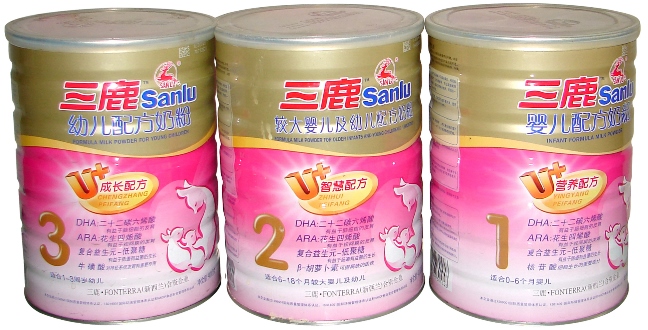
Melamine milk was quite the mother of scares around the world. The tainted milk from China was exposed on 12 September 2008 when sick babies were discovered to have drunk the same milk brand from Sanlu Group. Here’s a timeline you can read. When the milk was tested, it was found to contain excessively high levels of melamine up to 2,500ppm. A very different case from the White Rabbit candy.
How did melamine get into the dairy products? Apparently, the spiking of milk in China is common practice to FOOL quality control! Here’s a chart to explain the process:

The scandal caused many countries, including Malaysia, to recall and ban products, not just this milk, but baby food, the White Rabbit candy, Cadbury, biscuits and anything else that contained Chinese dairy products. In Malaysia, we even tested fruits and veges that were imported from China. In the end, a total of 296,000 children in China fell ill, 6 babies died, 1,500 raccoon dogs bred on a farm in China also died because their feed contained melamine, and two individuals from the company were executed.
Actual threat: 4/5
We gave this a 4 because it made so thousands of babies sick and 6 die. But it’s not a 5 because it didn’t affect Malaysians per se very much. Even though it did cause a massive scare, no deaths were reported here.
7. Bird flu and swine flu scare
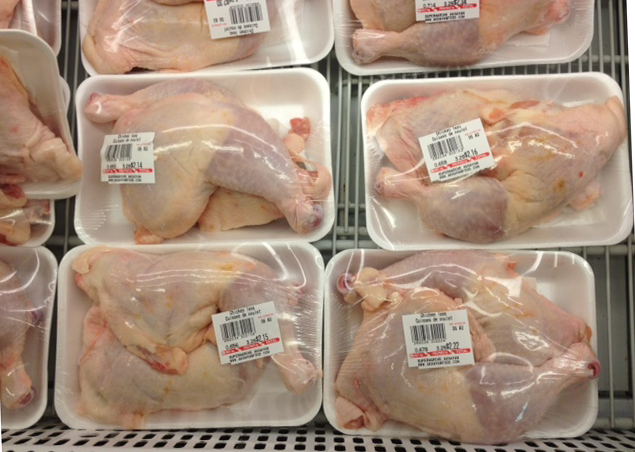
Remember bird flu and swine flu? In 2009, there was a global epidemic and everybody was talking about the A(H1N1) virus, especially in Asia. We remember back then, people were really scared, saying you can even catch it by eating chicken, eggs and bak kut teh. People were also very afraid that the virus would mutate. But actually, people don’t catch the virus from eating fully cooked chicken or pork. They caught it through close contact with droppings, some cleaning infected animals, and from person to person.
To protect ourselves, the Government banned chicken imports from China. It was so bad that we had to declare a national health emergency. Unfortunately, it didn’t stop Malaysians from catching it. The total number of cases was 5,876, while the death toll stood at 78. Today if you Google it, the issue is still ongoing. This month alone, a housewife from Port Dickson died, while a student from a Shah Alam school is seeking treatment in hospital.
Actual threat: 5/5
Because this disease reached GLOBAL epidemic level and many people died. It’s also is still going on today.
8. Mad cow disease
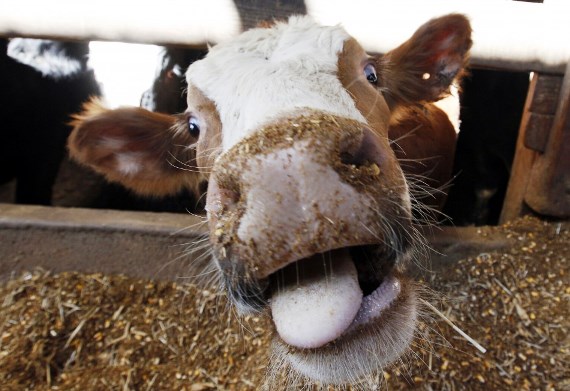
Mad cow disease or bovine spongiform encephalopathy (BSE) broke out in the UK in the 80s. It is a transmissible, slowly progressive, degenerative, and fatal disease affecting the central nervous system of adult cattle. Often when there’s an outbreak, people panic and stop eating the meat. But for all the fuss, BSE is not transmittable to humans unless you eat the infected part of the cow, which was the nerve tissue (brain and spinal cord) – NOT the regular meat parts.
When humans consume that, it becomes a different type of disease called variant Creutzfeldt-Jakob disease (vCJD). What Malaysia did, along with Singapore, China, Taiwan, Japan, and South Korea, was ban beef imports from the US. We also banned cattle products from Thailand and Brazil. Thankfully, neither BSE nor the human version vCJD hit Malaysia and no fatalities were reported. Among some of the other ways we protected the rakyat was not to accept blood donations from people who came from high-risk countries.
Actual threat: 3/5
Malaysia was generally safe from mad cow disease and vCJD. We didn’t find any cases of Malaysians contracting it, but if ugaiz know of any, do share the link with us.
9. Boric acid noodles
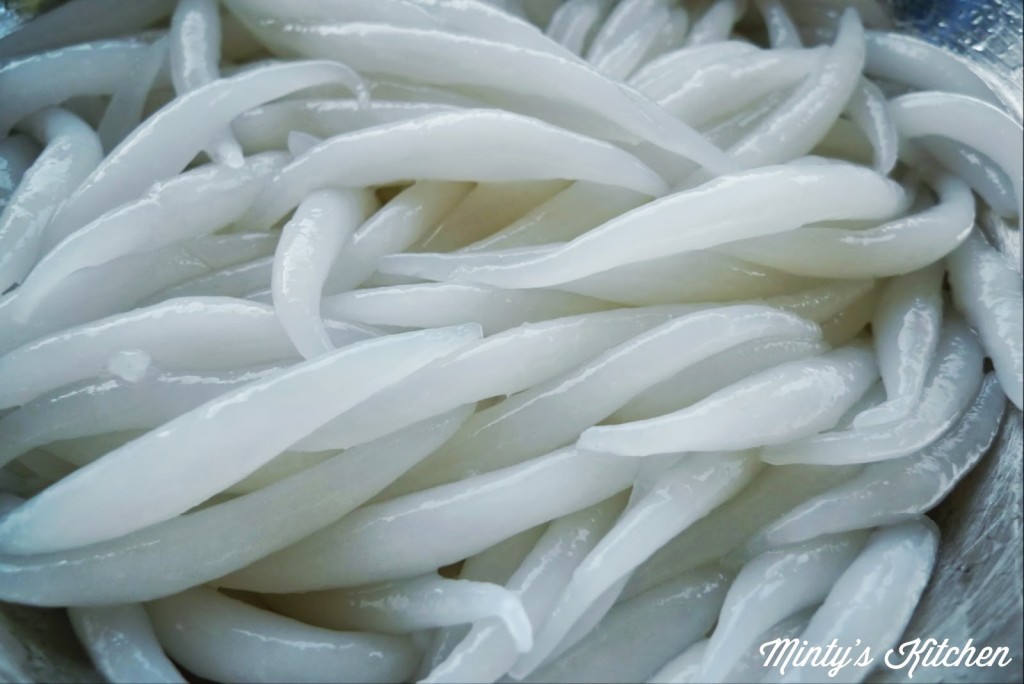
A really tragic case of loh see fun poisoning happened in October 1988, in Kampar, Perak, killing 13 children between the ages of 2 and 11 years. Investigations showed that all the victims ate loh see fun (rat’s tail noodles) from one supplier. The toxicological examinations showed that a high concentration of aflatoxin and boric acid combo was what killed them.
When the New Straits Times reported it, it described the public outcry – hawkers and sellers were furious at the manufacturer, stalls closed or stopped selling loh see fun. Kedah also cracked down on manufacturers and some people were calling the authorities to check if there was possible radioactive contamination of the noodles.
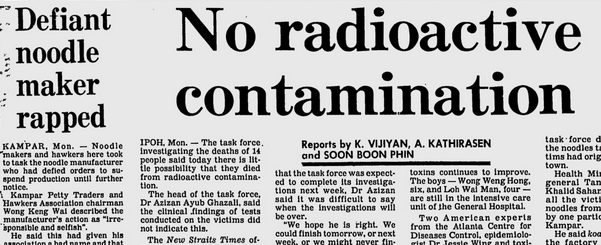
Actually, the use of boric acid as a food preservative is BANNED here. Anyone who breaks this law can be fined up to RM100,000, jailed 10 years or both. But people are still using it in noodles, bak chang, and Nyonya kuih. Yellow noodles especially contain a lot of boric acid at 70.4%, according to the Health Ministry. The Consumers Association of Penang (CAP) has been conducting tests over the years since 1984, and according to them, nothing serious is being done about it, even though they’ve urged the Health Ministry to act.
How serious is boric acid damage? Bad. It’s considered a very dangerous poison used in roach-killing products. In the past, it was also used to disinfect and treat wounds, but patients who used it over and over again got sick and died. Scared yet?
Actual threat: 5/5
The really scary thing about this is, that CAP is still finding it in the food we Malaysians eat every day. That and the fact that this poison is more dangerous than your average food preservative. Anyone who consumes food with a lot of boric acid could vomit, suffer from dysentery, dermatitis, kidney failure and damage to the blood vessels.
OMG they DON’T test food before mass marketing it??
We had a very interesting conversation with our source from the food manufacturing industry. Did you know, you can open a new food manufacturing factory and the authorities DON’T test the product before allowing it into the market? There’s no food tasting or sample examining, anything like that.
“You can send samples to labs to be tested by yourself. These labs are private companies. It’s the businessman who has to be responsible for the safety of his food. The authorities can only make sure your premises are clean and halal ingredients are halal. For other things, they don’t check food content.” – our source
Generally, all manufacturers refer to the Food Act 1983. If any one wants to produce something new that is not listed in the Food Act, then they’ll follow the US or EU standards. EU standards are generally more stringent. So unless someone gets sick and raises an issue against your factory, you can continue to manufacture food.
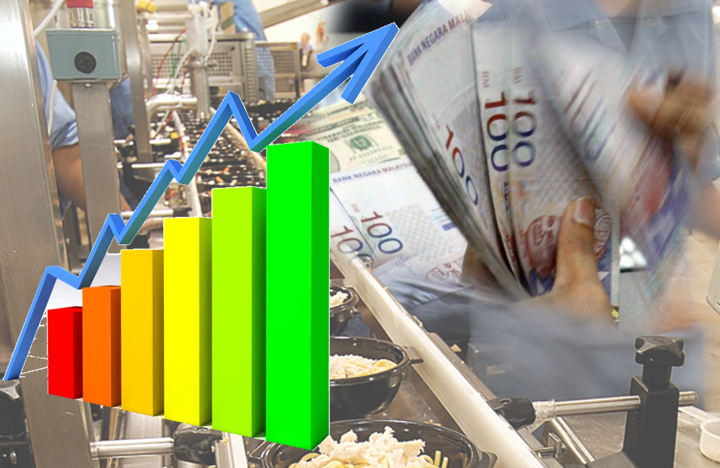
Our source told us that the reality is, manufacturers use a lot of additives – there’s practically NO escaping it. But ugaiz know that aldy lah. Even organic food is not always 100% organic. But some people go one level above that, said our source:
“Behind every type of food, there are people lobbying to promote it. Sometimes it drives companies to unethical practices. Like in the US in the 50’s, people said bacon is healthy, so for breakfast every day everyone ate bacon. But in the end is bacon really healthy for you?” – our source
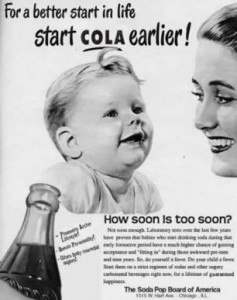
This one poison, that one poison. How to eat?
Takkan you farm your own chickens and vegetables? People barely even have time for Farmville these days. How?The only advice we can give is eat responsibly and everything in moderation. Also, if you know there’s something wrong with your can of tuna, report it. Our source says Malaysians have this problem of not questioning:
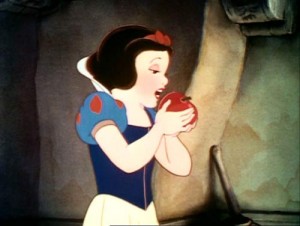
“Malaysian food knowledge is not really there yet. We’re not educated enough to question. In other countries, if there is something wrong, consumers will report it. ‘What oil do you use? How do you store it? What ingredients do you use?’ Malaysians see people chopping veges at the back of the street with all the flies, we don’t even question that, then how do we question higher level things (like manufacturing)?” – our source
We wrote an article once on this – that Malaysians prefer to just block out the sight of flies, roaches and rubbish in restaurants. Surprisingly though, most of ugaiz voted that you DO care about what you eat in our poll. Ultimately, it’s up to ugaiz la. But you don’t want to be too complacent at the expense of your health, right?
- 608Shares
- Facebook582
- Twitter1
- Email7
- WhatsApp15


